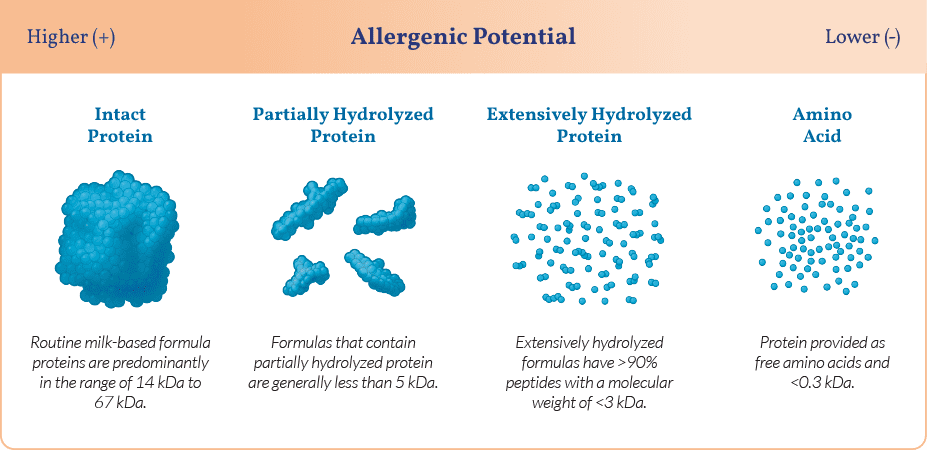Extensively hydrolyzed proteins derived from cow’s milk, in which the protein is in the form of free amino acids and peptides <1.5 kDa, have been used in formulas for over 50 years for infants with severe inflammatory bowel diseases or cow’s milk allergy.12
The proteins in extensively hydrolyzed infant formula are predominantly subjected to enzymatic hydrolysis in order to reduce the peptide size, and, consequently, the allergenicity of the proteins.13 Smaller-sized proteins reduce the risk of triggering an allergic reaction.

Hydrolysis Characteristics Molecular Weight Profile (area %)
Store Brand Hypoallergenic Infant Formula contains low molecular weight peptides to provide reduced allergenicity. Hypoallergenic infant formula derived from cow’s milk should have most of the nitrogen in the form of free amino acids and peptides at <1500 Da.17 The molecular weight profile obtained by size exclusion chromatography for Store Brand Hypoallergenic confirms that the majority of the protein (85%) have been hydrolyzed to a molecular size of less than 500 Da.